Professional Courses
Industry-relevant training in Business, Technology, and Design
Categories
Interactive Games
Fun games to boost memory, math, typing, and English skills
Typing
Memory
Math
English Adventures
Knowledge
Decoding the Official JEE Main Exam Pattern

When preparing for JEE Main, knowing the exam pattern is just as important as studying the syllabus. Without understanding how the paper is structured, what types of questions are asked, and how they're marked, you're walking into the test blind.
In this detailed guide, we break down the official JEE Main exam pattern, section by section, question by question, so you can prep smart and perform your best on test day.
Whether you're a first-time aspirant or a repeater aiming for a better score, mastering the exam pattern is a must.
Why Understanding the JEE Main Pattern Matters
A well-informed student always has the upper hand.
Here’s why knowing the JEE Main exam pattern is a game-changer:
- You can plan time allocation per section
- It reduces surprises during the exam
- It helps in building a mock test strategy
- You avoid negative marking traps
- It boosts confidence by setting clear expectations
With competition getting stiffer every year, the edge lies in the details and the pattern is your blueprint to success.
Overview of the JEE Main Exam Structure
The JEE Main exam is conducted for multiple programs, but the most common one is Paper 1 for B.E./B.Tech aspirants.
Mode of Exam:
- Computer-Based Test (CBT)
- Conducted in multiple shifts and sessions across India
- Available in 13 languages, including English, Hindi, Gujarati, and regional languages
Duration:
- 3 hours (180 minutes)
Total Marks:
- 300 marks
Subjects Tested:
- Physics
- Chemistry
- Mathematics
Each subject carries equal weight: 100 marks each.
Subject-Wise Breakdown
Let’s look at each section closely so you know what to expect and how to prepare.
Mathematics
- Number of Questions: 10 MCQs + 5 Numerical (any 5 to attempt)
- Total Questions to Attempt: 10
- Marking Scheme:
- +4 for correct
- -1 for wrong (MCQs only)
- No negative marking for numerical
Physics
- Number of Questions: 10 MCQs + 5 Numerical (any 5 to attempt)
- Total Questions to Attempt: 10
- Marking Scheme:
- Same as above
Chemistry
- Number of Questions: 10 MCQs + 5 Numerical (any 5 to attempt)
- Total Questions to Attempt: 10
- Marking Scheme:
- Same rules
In total, you get 30 questions per subject, but you're required to attempt 25 per subject—15 MCQs and 10 numericals (choose any 5).
This gives the candidate some choice, especially helpful in subjects where they feel less confident.
JEE Main Marking Scheme
Let’s break down how your score is calculated.
- Correct MCQ: +4 marks
- Wrong MCQ: -1 mark
- Unanswered MCQ: 0 marks
- Correct Numerical: +4 marks
- Wrong Numerical: 0 marks (no penalty)
This means the maximum score is 300, and with negative marking, random guessing is risky.
Key Features of the JEE Main Exam Pattern
1. Sectional Choice
You are allowed to choose which numerical questions to answer in each section. Out of 10 numerical questions, only 5 need to be attempted. This flexibility reduces pressure and helps tailor your attempt based on strengths.
2. Mixed Difficulty Level
Questions range from:
- Easy (~30%)
- Moderate (~50%)
- Tough (~20%)
This means even if you’re not aiming for IITs, a good strategy can help you secure an NIT or IIIT seat.
3. Uniform Weightage
Each subject has the same weight: 100 marks. So you can’t afford to skip any subject, even if one feels stronger.
4. Balanced Question Types
- MCQs test concept application and elimination skills
- Numerical Questions test exact solving, speed, and accuracy
A mix of question types keeps the exam dynamic and tests multiple abilities.
JEE Main Session System
Each year, JEE Main is conducted in two sessions:
- Session 1: Usually in January
- Session 2: Usually in April
Students can choose to appear in either one or both. If you appear in both, the best score is considered for merit ranking.
This system allows:
- A second chance without losing a year
- Reduced pressure in any one attempt
- Opportunity to improve rank and percentile
Our recommendation? Attempt both sessions. Use January to test your readiness and April to optimise your score.
Time Management Based on Exam Pattern
You get 180 minutes to solve 75 questions:
- That’s an average of 2.4 minutes per question
Smart Time Plan:
- Physics: 50 minutes
- Chemistry: 45 minutes
- Mathematics: 55 minutes
- Buffer / Revision: 30 minutes
The exact order is up to you, but this structure ensures no section is rushed.
How to Practice Using the JEE Main Pattern
1. Attempt Full-Length Mock Tests
Practice 3-hour mocks that replicate:
- CBT format
- Question distribution
- Marking scheme
- On-screen calculator (which is not available, by the way!)
Use platforms or test series that simulate the exact NTA format.
2. Focus on Weak Sections
Knowing the pattern allows you to focus on specific areas:
- Are you slow in numericals?
- Do you make MCQ errors under pressure?
- Do you spend too much time on one subject?
Use this feedback to adjust your preparation.
3. Simulate Exam Conditions
- Attempt mocks in the same time slot as your real exam
- No breaks or distractions
- Practice OMR marking if doing paper-based drills (though JEE is CBT)
4. Analyse Every Attempt
Post-mock analysis is just as important as the test. Track:
- Accuracy rate
- Time per section
- Questions skipped
- Questions guessed
Use the pattern to understand where you’re leaking marks.
FAQs on JEE Main Exam Pattern
Is the paper the same in all shifts?
No. Since JEE Mains is conducted over multiple days and shifts, questions vary. But NTA uses a normalisation process to ensure fairness across all sessions.
Is there a change in pattern every year?
Usually not. However, NTA may introduce minor tweaks, such as section choices. Always check the official information bulletin for the year you’re appearing.
What about B.Arch and B.Planning?
Those programs have separate papers with different patterns:
- Drawing section (offline)
- Aptitude (online)
- Maths (online)
This blog focuses only on the B.E./B.Tech Paper 1 pattern.
Can I switch between sections?
Yes. The CBT interface allows you to move freely between sections and questions. You can also mark questions for review before final submission.
Final Thoughts
Understanding the JEE Main exam pattern is the first step to mastering the exam itself. The format isn't just about numbers—it's about strategy, mindset, and preparation style.
What you now know:
- Total questions, time, and marks
- Subject-wise structure
- Marking scheme for MCQs and numerical questions
- What to expect in terms of difficulty
- How to use the pattern for mock test planning
So, don’t just study topics, practice the format. That’s how toppers win.
Get comfortable with the structure. The more familiar the pattern, the less pressure on the day that counts.

Learn how negative marking works in JEE Main 2025 and how to avoid it with practical, proven strategies.

Learn how to prepare for JEE Main 2025 with a proven, winning strategy. Get a detailed plan, subject-wise tips, and...

Learn the chapter-wise weightage for JEE Main 2025 across Physics, Chemistry, and Maths. Prioritise smartly and...

Discover the most important chapters for JEE Main 2025 across Physics, Chemistry, and Maths. Focus your prep smartly...
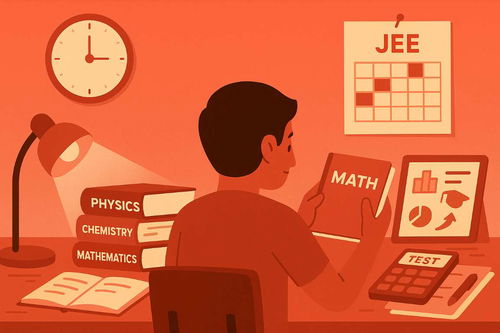
Discover top JEE Main books for Physics, Chemistry & Maths. Learn how NCERT & reference books pair with AllRounder.
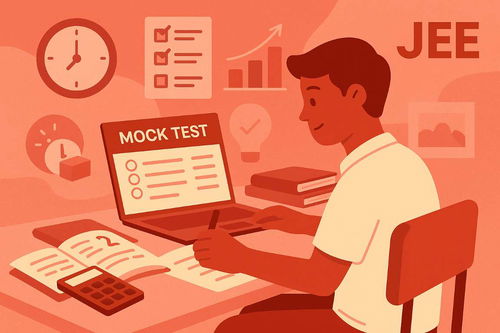
Looking for free JEE Main mock tests to boost your preparation? Discover the best platforms, tips, and strategies to...

Discover what scores and percentiles are needed to secure seats in top NITs, IIITs, and GFTIs. Learn how category...
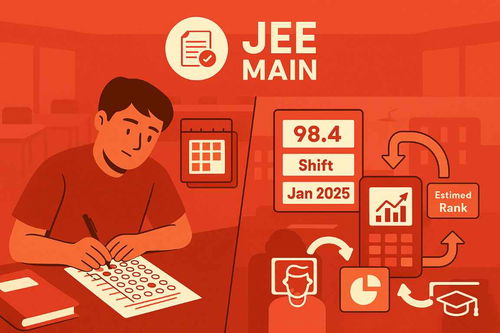
Understand the exact difference between JEE Main percentile and rank. Learn how scores are normalized across...

Understand the JEE Main scoring system to maximize your result. Learn the marking scheme, how to handle negative...

Confused about the JEE Main attempt limit? This guide clarifies how many times you can appear, the eligibility...

Wondering how many times you can appear for JEE Mains? This guide explains the total attempts allowed, session...
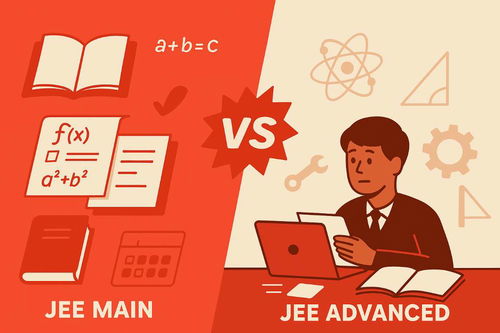
Discover the key differences between JEE Main and JEE Advanced in terms of syllabus, pattern, difficulty, and prep...

Confused about JEE Main qualification rules? This blog gives you a detailed checklist of eligibility criteria,...

Explore this simple, step‑by‑step guide to the JEE Main counselling process. Learn how to register, fill choices,...

Curious about how many times SC students can attempt JEE Main? This complete guide covers JEE Mains attempt rules,...

Want to score 200+ in JEE Main? This practical guide gives you proven tips, subject-wise strategies, mock test...

Wondering how the JEE Main exam is structured? This complete guide breaks down the official JEE Main exam pattern...
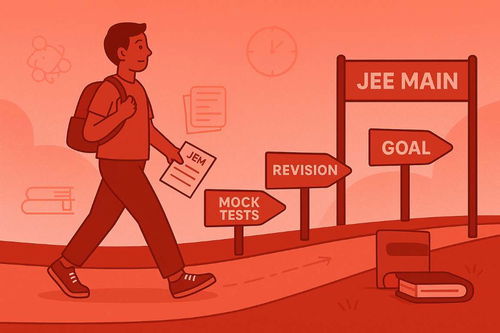
Learn how to crack JEE Main on your first attempt with proven strategies. This guide covers planning, conceptual...
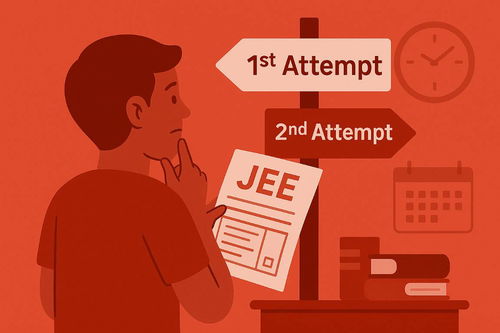
Learn how many JEE Main attempts you can take after Class 12. This guide covers eligibility, attempt limits, subject...
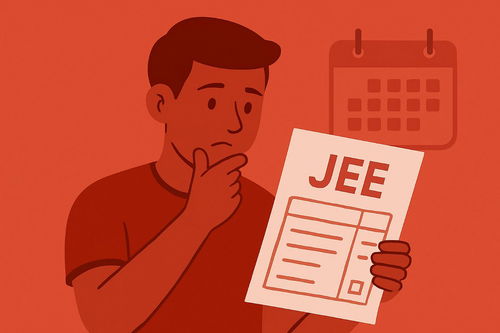
Learn about the JEE Main age limit requirement and key eligibility rules. Understand the attempt policy, Class 12...

Discover the most important topics for the JEE Main exam in Physics, Chemistry, and Mathematics. Learn subject-wise...
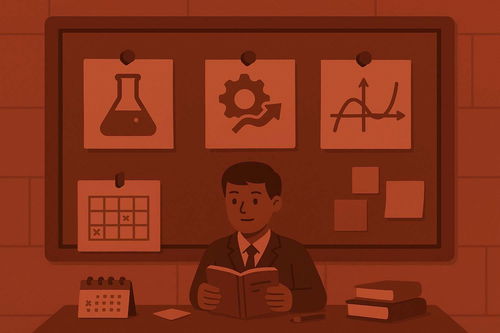
Get a subject-wise preparation strategy for JEE Main step-by-step using smart tips and trusted resources from AllRounder.ai.

Looking to score high in JEE Main 2026? Discover expert preparation tips on creating smart study plans, mastering...

Confused about JEE Mains eligibility? This detailed guide explains JEE Mains eligibility criteria including...
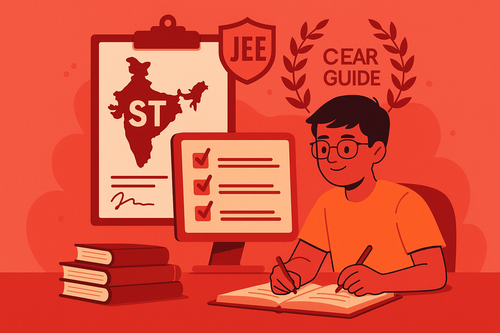
Confused about JEE Main Attempts for ST Category? This detailed guide covers attempt limits, age relaxations,...
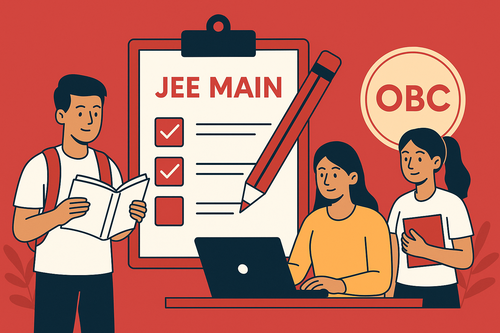
Wondering how many times OBC candidates can appear for JEE Mains? This detailed guide explains JEE Main Attempts for...

Dropping a year for JEE Mains? This in-depth strategy guide helps droppers optimise their JEE Main attempts with...

Confused about how many times you can appear for JEE Main? This guide explains the number of JEE attempts, session...
Resources
-
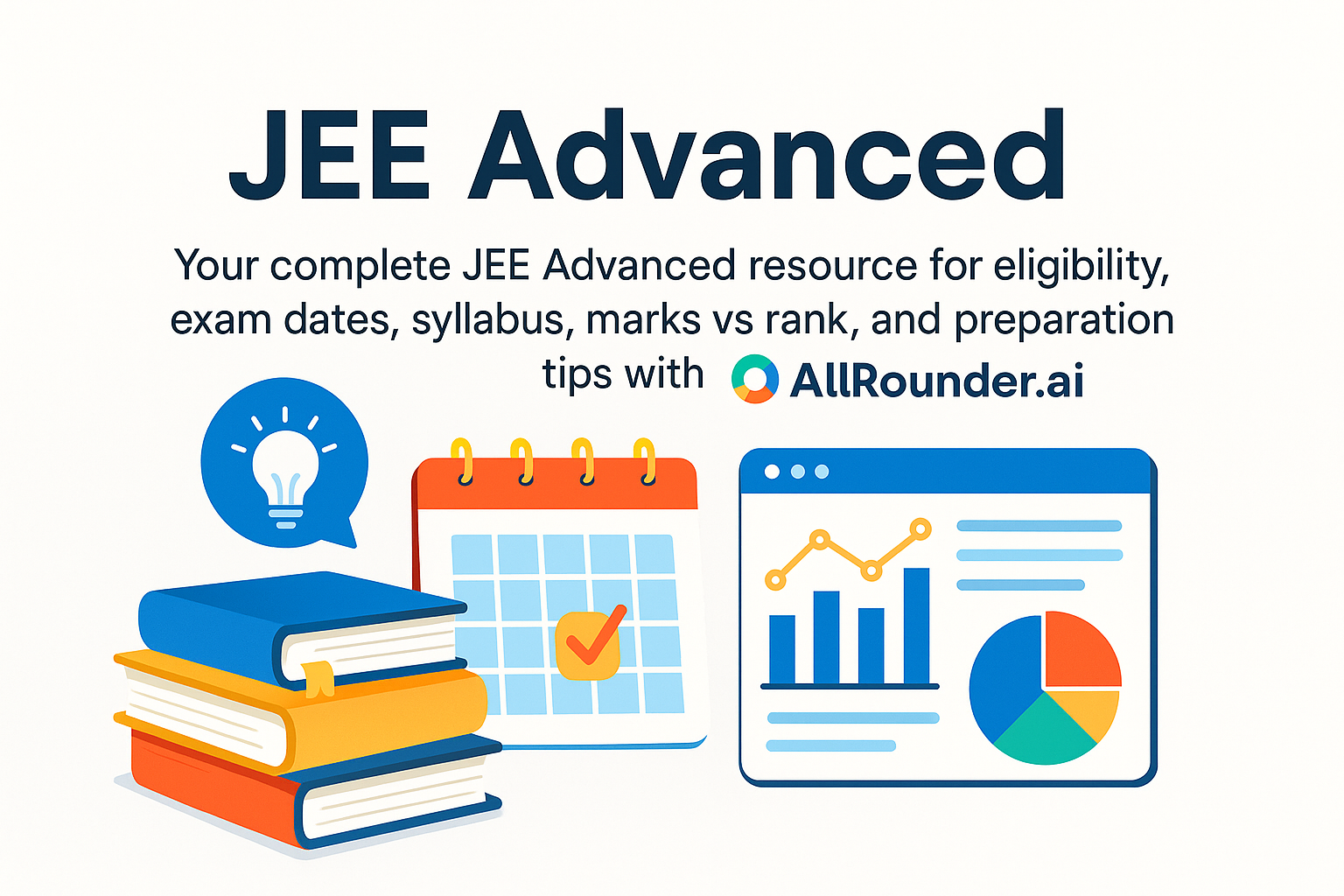
Your complete JEE Advanced resource for eligibility, exam dates, syllabus, marks vs rank, and...
-
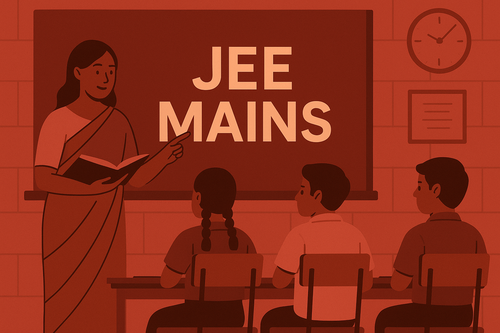
Understand the entire JEE Main process, from application and eligibility rules to the exam...
-

Explore the IB Board – a global curriculum emphasizing holistic, student-centered learning...
-

Learn about CBSE – India’s national school board offering a standardized curriculum, NCERT...
-

Explore everything about the ICSE board – its curriculum, subjects, exam format, and academic...
